Short Term and Working Memory: Clinical Insights
Keynote Speaker: Robert J. Doman Jr.,
Founder and Director of the National Association for Child Development
2nd Annual International Congress of Developmental Psychology
University of Aguascalientes
Aguascalientes, Mexico
October 2008
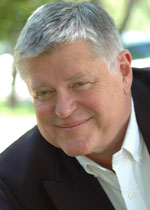 The International Congress of Developmental Psychology, held at the University of Aguascalientes, was the site of Bob Doman’s first opportunity to present the initial ground breaking data from NACD’s Simply Smarter Project. NACD’s Director of Research, Dr. Bruce Haslam, and NACD’s Development Director, Carol Estrada, accompanied Bob to Mexico, assisting Bob and translating throughout the presentation.
The International Congress of Developmental Psychology, held at the University of Aguascalientes, was the site of Bob Doman’s first opportunity to present the initial ground breaking data from NACD’s Simply Smarter Project. NACD’s Director of Research, Dr. Bruce Haslam, and NACD’s Development Director, Carol Estrada, accompanied Bob to Mexico, assisting Bob and translating throughout the presentation.
The data Bob presented represent the first definitive information on the development of short term and working memory, and they provide some very significant insights into the understanding and development of cognitive ability and thought.
Most of the new insights provided by the Project verified NACD’s clinical experiences and expectations and provided the first concrete analysis of the development of these critical functions. One of the more relevant aspects of the study was the confirmation of Bob’s belief that auditory processing–the basis of most conceptual thought–was lower than previous assumed and lower than visual processing. Bob strongly believes that this critical function has diminished as a reflection of societal changes in the last 50- 100 years. Furthermore, he believes that lower auditory processing has created serious problems, both for individuals and society as a whole, as we lack the skills to think, learn, and communicate as effectively as we need.
Another significant aspect of NACD’s Project was discovering that visual forward (short term) processing skills tend to develop with age into the 30’s, while auditory forward skills and reverse (working memory) processing skills typically continue to develop into the 20’s. And not surprisingly, after peaking, without specific intervention these critical functions (particularly the auditory and working memory skills) start a slow but steady decline. (see figure 1 – project graph with 4 lines)
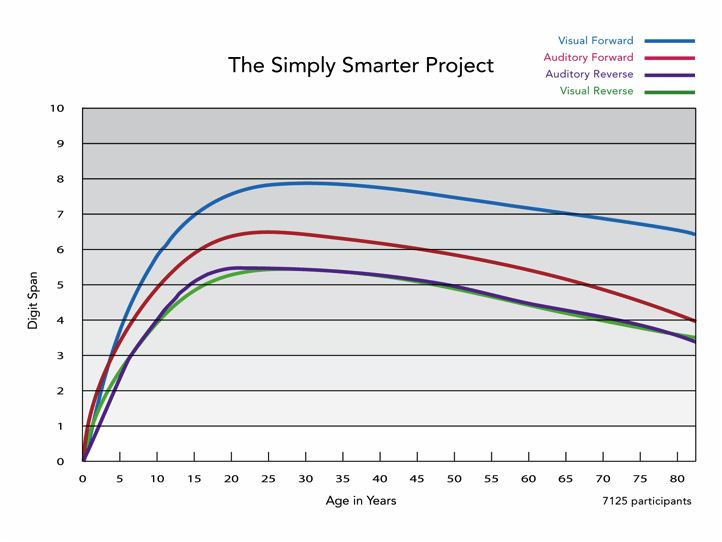
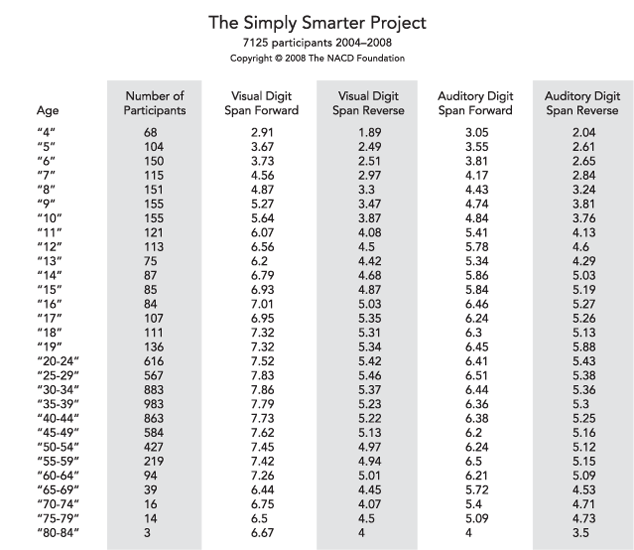
Part of Bob’s presentation was to refute the beliefs of the majority of researchers, which is that short term and working memory functions are fixed. As Bob explained, neuro-plasticity is such that, “If it develops, it changes” and that, “If it develops, then it can be changed.” As evidenced by Bob’s work, not only can these critical functions be developed, they can be developed at an accelerated rate, developed to levels far superior to the norm, and then maintained.
The mass of new information that Bob presented included a scale representing the complexity of thought. The scale demonstrates how improvement in sequential processing permits an increase in more complex mental processes. Bob also demonstrated, as evidenced through the Simply Smarter software data, that to develop working memory and cognitive thought, one must not only use or exercise the brain, but also apply TDI Targeted Developmental Intervention® in an organized manner.
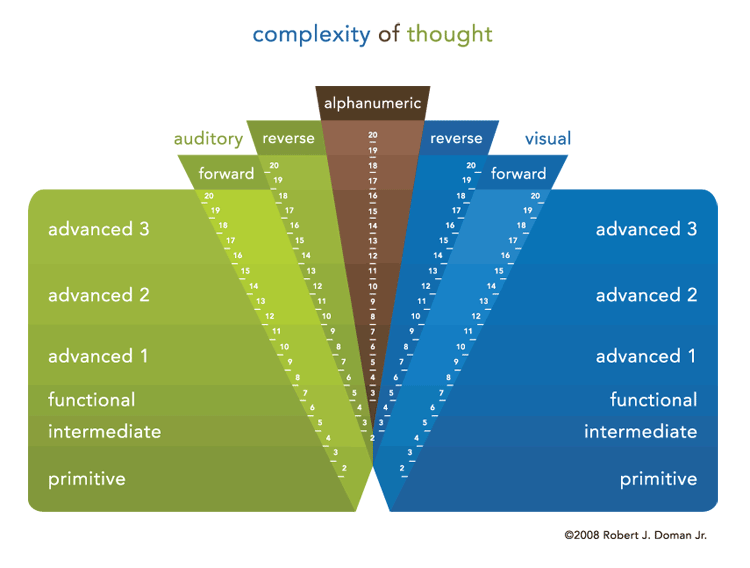
Additionally, Bob presented his new model of the Neurodevelopmental Construct of Thought and Memory. Bob’s model shows the correlations and relationships between short term memory, working memory, and long term memory, explaining how all of these pieces not only inter-relate but also how they can be influenced and developed.
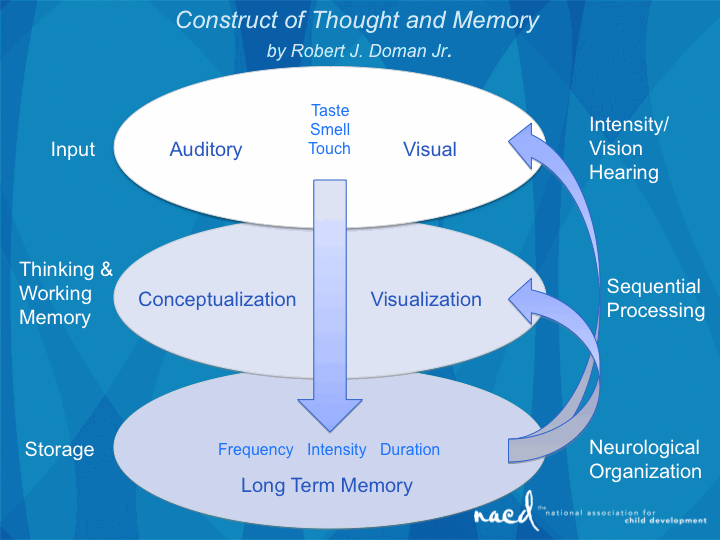
Bob’s work was very well received, and his keynote speech helped to insure his position at the forefront of human development.
Reprinted from the Journal of The NACD Foundation (formerly The National Academy for Child Development)



